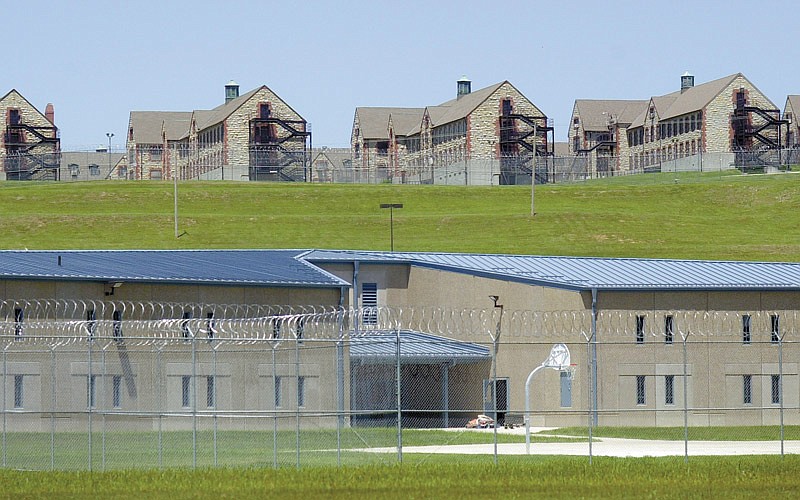Mid-Missouri correctional centers have surpassed 1,000 COVID-19 cases among staff and offenders since the start of the pandemic.
As of Aug. 23, there have been 1,025 active and recovered COVID-19 cases among Department of Corrections staff and offenders at Jefferson City Correctional Center, Algoa Correctional Center and Tipton Correctional Center.
According to DOC's COVID-19 data, JCCC has eight active cases and 531 total recovered cases among staff and offenders as of Aug. 23.
Algoa has three active cases and 233 total recovered cases. Tipton has one active case and 249 total recovered cases.
"Obviously the pandemic has been a huge problem throughout the world, and we're not immune to cases here," said Karen Pojmann, communications director for the department. "Fortunately, we haven't had any major outbreaks the way other states have."
Statewide, the Department of Corrections has 82 active cases among offenders, 49 active cases among prison staff and 31 active cases among non-prison staff.
Prior to the rise of the delta variant, offenders in Missouri prisons were 1.8 times more likely to contract COVID-19 than Missourians not in prison, according to a New York Times comparison in April.
That comparison ranks Missouri as the ninth best state in offender infection rates compared to state population infection rates. The country's top state is Maine and the worst is Michigan, where offenders are nine times more likely to catch the virus than the state's general population.
A total of 15,556 offenders in Missouri - 67.3 percent of the state's prison population - have been vaccinated.
State employees are not required to disclose their vaccination status to their employer, so an accurate number of vaccinated prison staff is not available.
Like the rest of the state, Missouri prisons experienced a surge of cases as the highly contagious delta variant spread through unvaccinated communities.
With that rise, Pojmann said prisons are continuing containment efforts.
Pojmann said most facilities with high numbers of active cases are reception and diagnostic centers - locations in which offenders enter the state prison system from county jails.
County jails often don't have the same standards for testing, isolating or quarantining positive cases as the state, Pojmann said.
"Some of them may or may not be vaccinating offenders, so we're getting people in from outside who are already positive for COVID," she said. "And then we quarantine them at that point and offer them the vaccine."
As a result, Pojmann said cases are expected to keep climbing in those facilities.
"There's not much we can do to control who comes into the facility or what kind of state of health they're in when they arrive, but at our other facilities we can have a really good handle on it," Pojmann said.
According to a report from Kansas City Public Radio earlier this month, however, some offenders might not be reporting symptoms to be tested out of fear of being sent to isolated housing.
Still, the Department of Corrections uses wastewater testing twice per week at every facility to monitor the presence of COVID-19 in Missouri prisons.
If the virus is detected in wastewater, offender testing is conducted, Pojmann said.
The department has also installed air purifiers in prison ventilation systems to kill COVID-19 in the air, which Pojmann said led to an 80 percent drop in cases over four weeks earlier in the pandemic.
State prisons have also implemented a containment plan in which offenders are kept with their housing unit as often as possible, which Pojmann said has helped reduce contact between offenders and allowed prisons to avoid outbreaks.
Pojmann said the DOC's largest outbreak was about 10 percent of a prison population and most are less than 4 percent.
"It's been pretty effective at containing the spread of the virus as much as possible," Pojmann said. "Obviously, within a prison it's hard to maintain social distancing and so forth, so we've been approaching this way."
The headline of this article was edited at 10:35 a.m. Aug. 30, 2021, to remove a reference describing the increase in the cumulative number of cases since the pandemic began as "climbing." A DOC spokesperson reacted, "Right now the overall rate of COVID infection in Department of Corrections facilities, including those in mid-Missouri, is decreasing. Positive cases peaked in October 2020, dropped rapidly in winter and spring of 2021, increased a bit in June and July 2021, and have continued to decline since Aug. 1. Wastewater testing shows the level of COVID in the water at mid-Missouri facilities is below what's considered the outbreak threshold."

